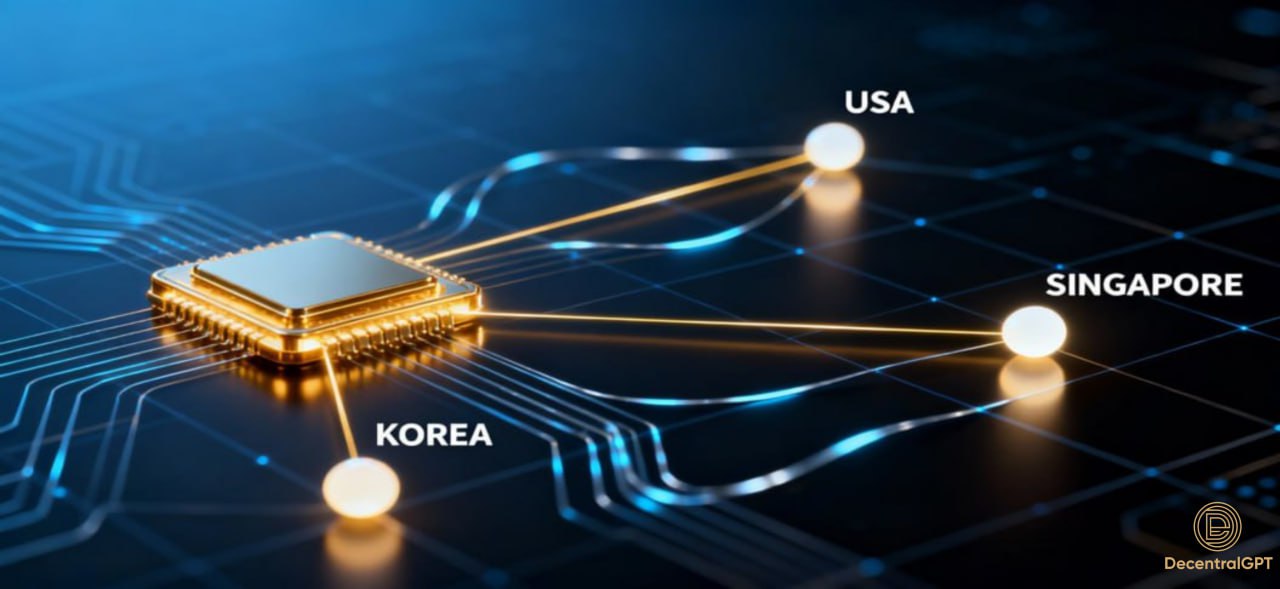Open Source AI Week Meets Next-Gen GPUs: Why DecentralGPT’s Vendor-Agnostic, Regional Inference Is the Practical Advantage

Abstract glowing GPU chip with connected regional nodes representing decentralized AI inference network
What’s new today
What this means for you:
• NVIDIA kicked off Open Source AI Week—a series of community hackathons and workshops highlighting the latest open-source AI advances and tooling. It’s another sign that AI is becoming more modular and developer-driven.
• AMD outlined near-term/next-gen data-center GPUs (MI350 now, MI400 preview for 2026) with big inference and training gains and an open, rack-scale approach aimed at easier multi-vendor deployment.
All of this builds on the broader megatrend: multi-gigawatt “AI factories” and massive partnerships that will keep adding global capacity over the next 12–24 months.
Translation: tools are getting more open, and compute supply is scaling fast—but the user experience still hinges on where and how you run inference.
Why this matters (plain English)
Benchmarks and new chips are great, but users notice latency and reliability first. If your product serves customers across regions, you need two things in production:
1. Vendor agility—so you’re not stuck when supply, prices, or policies shift.
2. Regional routing—so responses feel instant and compliant with local rules.
That’s infrastructure, not just model quality.
Where DecentralGPT fits
DecentralGPT operates a decentralized LLM inference network across a distributed GPU backbone. We route every request to nearby regional nodes (e.g., USA / Singapore / Korea) and let teams mix models and hardware without single-vendor lock-in.
• Vendor-agnostic by design
As ecosystems open up (NVIDIA’s developer push) and alternative silicon matures (AMD MI350→MI400), DecentralGPT lets you tap the best price-performance available—no code rewrite.
• Regional, low-latency serving
Place workloads by region so chat, agents, and tools feel fast where your users actually are.
• Two ways to use it
◌ DeGPT (B2C): a multimodel chat app for everyday work.
◌ API (B2B): simple endpoints with region selection, streaming, logging, and fallbacks.
Practical examples you can ship now
• Agent workflows that keep step time low by serving from the nearest region, with automatic failover when one provider is congested.
• Multimodel products that route image/voice/text to different models and regions, then reconcile results in one UX.
• Cost-aware routing that sends long-context or batch jobs to cheaper/closer nodes while keeping latency-sensitive prompts local.
The takeaway
Open ecosystems (dev weeks, open tools) plus next-gen GPUs (MI350 now, MI400 next) will keep adding raw capacity. DecentralGPT converts that into day-to-day product wins—vendor-agnostic, regional LLM inference on a decentralized GPU network—so your users feel the speed and your team keeps costs predictable.
Run your AI where your users are.
Try DeGPT: https://www.degpt.ai
Get an API key and choose your region: https://www.decentralgpt.org/